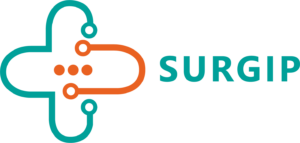Real-time surgical scheduling software has revolutionized the way operating rooms manage their schedules, optimizing efficiency and enhancing patient care. Picture a scenario where surgical teams can seamlessly coordinate procedures, and stakeholders are instantly notified of any schedule changes. In the fast-paced world of healthcare, the implementation of cutting-edge technology like real-time surgical scheduling software is not just a luxury but a necessity. Let's delve into how this innovative solution is transforming the landscape of operating room management and maximizing efficiency in surgical operations.
Key Features of Effective Real-Time Surgical Scheduling Software
Seamless Integration with Hospital Management Systems
Effective real-time surgical scheduling software should seamlessly integrate with existing hospital management systems, such as Electronic Health Records (EHR) and Patient Management Systems (PMS). This integration ensures smooth data flow and eliminates the need for manual data entry, reducing errors and saving valuable time.
Automated Schedule Optimization
One of the key features of real-time surgical scheduling software is automated schedule optimization. The software uses algorithms to optimize schedules based on factors like surgeon availability, OR capacity, and procedure complexity. This automation streamlines the scheduling process, minimizes conflicts, and ensures efficient use of resources.
Real-Time Updates and Notifications
With real-time scheduling software, stakeholders receive instant updates and notifications regarding schedule changes. Surgeons, nurses, and support staff are informed promptly about any modifications, cancellations, or additions to the surgical schedule. This real-time communication eliminates confusion, enhances coordination, and increases overall efficiency.
Customizable Reporting and Analytics
A robust real-time scheduling software offers customizable reporting and analytics features. Users can generate reports on key performance indicators, such as OR utilization rates, wait times, and staff productivity. Analyzing these metrics helps healthcare facilities make informed decisions, optimize workflows, and improve operational efficiency.
Secure Data Management
Security is paramount in healthcare software. Real-time surgical scheduling software must adhere to strict data security protocols to protect sensitive patient information. Features like data encryption, user authentication, and access controls ensure that patient data remains confidential and secure.
User-Friendly Interface
An intuitive and user-friendly interface is essential for successful adoption of real-time surgical scheduling software. Healthcare professionals, who are often under time constraints, need a system that is easy to navigate and requires minimal training. A well-designed interface enhances user experience, improves productivity, and encourages widespread usage of the software.
External Link
Learn more about how top healthcare providers are leveraging real-time scheduling software for improved efficiency: Healthcare Industry Leaders
Enhancing Operational Efficiency with Real-Time Surgical Scheduling Software
Streamlining Communication Processes
Efficient communication is vital in the operating room environment. Real-time surgical scheduling software facilitates seamless communication between surgical teams, administrative staff, and other stakeholders. Instant notifications and updates ensure that everyone involved is on the same page, reducing misunderstandings and delays.
Reducing Scheduling Conflicts and Delays
Outdated scheduling systems often lead to conflicts and delays in the operating room. Real-time scheduling software helps mitigate these issues by providing up-to-date information on surgeon availability, OR resources, and procedure requirements. By proactively addressing conflicts, the software minimizes disruptions and enhances workflow continuity.
Improving Resource Utilization
Optimizing resource utilization is a key benefit of real-time surgical scheduling software. By automating scheduling processes and adjusting in real-time to changing circumstances, the software ensures that OR resources are utilized efficiently. This leads to reduced wait times, increased patient throughput, and ultimately, cost savings for healthcare facilities.
Enhancing Cost-Effectiveness
Cost-effectiveness is a significant consideration for healthcare facilities. Real-time surgical scheduling software contributes to cost savings by reducing overtime expenses, minimizing unused OR time, and enhancing overall operational efficiency. The software's ability to maximize resource utilization and streamline processes results in a more financially sustainable operation.
Leveraging Data for Decision-Making
Real-time scheduling software generates valuable data insights that can inform decision-making and performance improvement initiatives. By analyzing key metrics such as procedure times, utilization rates, and staff productivity, healthcare facilities can identify areas for optimization and implement data-driven strategies to enhance operational efficiency.
External Link
Discover how leading healthcare providers are leveraging real-time scheduling software to enhance operational efficiency and improve patient care: Healthcare Technology Innovations
Maximizing Patient Care Through Efficient Scheduling Solutions
Minimizing Wait Times and Enhancing Patient Satisfaction
Real-time surgical scheduling software plays a crucial role in minimizing patient wait times for surgical procedures. By optimizing scheduling processes and streamlining communication between surgical teams, the software ensures that patients receive timely access to the care they need. Reduced wait times lead to higher patient satisfaction levels and improved overall patient experience.
Ensuring Timely Access to Surgical Services
Efficient scheduling solutions provided by real-time software guarantee that patients have timely access to necessary surgical services. By eliminating scheduling conflicts and delays, healthcare facilities can ensure that patients are promptly scheduled for procedures, leading to better health outcomes and improved recovery times. Access to timely surgical care is essential for managing patient conditions effectively.
Enhancing Overall Patient Experience
A positive patient experience is a critical aspect of healthcare delivery. Real-time surgical scheduling software contributes to enhancing the overall patient experience by optimizing scheduling processes, reducing wait times, and improving operational efficiency. Patients benefit from smoother scheduling procedures, better coordination of care, and increased transparency regarding their treatment timelines.
Improving Communication with Patients
Effective communication with patients is key to providing quality healthcare services. Real-time scheduling software enables healthcare providers to communicate more effectively with patients regarding their surgical appointments, pre-operative instructions, and any changes to their schedules. Transparent and timely communication fosters trust and improves the overall patient-provider relationship.
Promoting Continuity of Care
Efficient scheduling solutions offered by real-time software support continuity of care for patients. By ensuring that surgical procedures are scheduled promptly and without delays, healthcare facilities can maintain continuity in the treatment plans of patients. This proactive approach to scheduling contributes to better coordination of care and more effective management of patient conditions.
External Link
Explore how leading healthcare institutions are leveraging real-time surgical scheduling software to enhance patient care and optimize scheduling processes: Healthcare Innovation Leaders
Best Practices for Implementing Real-Time Surgical Scheduling Software
Staff Training and Onboarding
-
Provide comprehensive training to all staff members involved in using the real-time surgical scheduling software.
-
Conduct workshops and hands-on sessions to familiarize users with the software's features and functionalities.
-
Ensure ongoing support and assistance to address any questions or challenges during the onboarding process.
Regular System Updates and Maintenance
-
Schedule regular system updates to ensure that the software remains up to date with the latest features and security patches.
-
Implement a proactive maintenance schedule to monitor the software's performance and address any issues promptly.
-
Engage with the software provider for continuous support and to stay informed about new updates and enhancements.
Utilizing Data Analytics for Optimization
-
Leverage data analytics tools within the software to analyze key performance metrics and trends.
-
Identify areas for improvement based on data insights, such as OR utilization rates, procedure times, and scheduling efficiency.
-
Utilize data-driven decision-making to optimize workflows, resource allocation, and overall scheduling processes.
Feedback Mechanisms for Continuous Improvement
-
Establish feedback mechanisms for users to provide input on the software's usability, effectiveness, and areas for enhancement.
-
Encourage open communication and suggestions for improvement from staff members who interact with the software regularly.
-
Use feedback to drive continuous improvement initiatives and iteratively enhance the software based on user input and experiences.
Security Protocols and Compliance Measures
-
Prioritize data security by implementing robust security protocols to safeguard patient information and sensitive data.
-
Adhere to industry regulations and compliance measures to ensure that the software meets healthcare standards for data protection.
-
Regularly conduct security audits and assessments to identify and address any vulnerabilities in the software's security measures.
External Link
Learn more about how industry leaders are implementing best practices for real-time surgical scheduling software to optimize efficiency and enhance operational workflows: Healthcare Technology Solutions
Implementing Real-Time Surgical Scheduling Software for Enhanced Efficiency
Seamless Integration with Existing Systems
When implementing real-time surgical scheduling software, ensure seamless integration with existing hospital management systems like EHR and PMS. This integration streamlines data flow and eliminates manual entry errors.
Automated Optimization for Efficient Scheduling
Utilize the software's automated scheduling optimization features based on surgeon availability, OR capacity, and procedure complexity. This automation enhances efficiency and reduces conflicts in the schedule.
Real-Time Updates and Notifications
Utilize the real-time updates and notification capabilities of the software to keep all stakeholders informed about schedule changes promptly. This feature enhances communication and coordination in the operating room.
Customizable Reporting and Analytics
Leverage the software's customizable reporting and analytics tools to track key performance indicators such as OR utilization rates and staff productivity. Analyzing these metrics aids in making data-driven decisions for process optimization.
Robust Security Measures
Ensure the software prioritizes data security with features like data encryption, user authentication, and access controls. Compliance with industry regulations and regular security audits are crucial for protecting patient information.
User-Friendly Interface for Easy Adoption
Implement a user-friendly interface to facilitate easy adoption of the software by healthcare professionals. A well-designed interface improves user experience, productivity, and encourages widespread usage of the scheduling software.
External Link
Discover how top healthcare providers are leveraging real-time surgical scheduling software to enhance operational efficiency and streamline workflows: Healthcare Technology Leaders
How does real-time surgical scheduling software benefit healthcare facilities?
Real-time surgical scheduling software enhances operational efficiency in healthcare facilities by automating scheduling processes, optimizing resource utilization, and minimizing wait times. By providing real-time updates and notifications, the software streamlines communication and reduces scheduling conflicts, ultimately improving patient care and satisfaction.
Is it challenging to integrate real-time surgical scheduling software with existing hospital management systems?
Integration of real-time surgical scheduling software with existing hospital management systems can be seamless with the right implementation strategy and support from the software provider. Ensuring compatibility and conducting thorough training for staff members can simplify the integration process and maximize the benefits of the software.
How can real-time scheduling software improve communication within surgical teams?
Real-time scheduling software facilitates improved communication within surgical teams by providing instant updates on schedule changes, surgeon availability, and OR resources. This real-time communication minimizes misunderstandings, enhances coordination, and ensures that all team members are well-informed throughout the scheduling process.
What features should healthcare facilities look for when selecting real-time surgical scheduling software?
Healthcare facilities should prioritize features such as automated schedule optimization, customizable reporting and analytics, robust security measures, and a user-friendly interface when selecting real-time surgical scheduling software. These features contribute to enhanced efficiency, streamlined workflows, and improved patient care outcomes.
Can real-time surgical scheduling software help reduce costs in healthcare operations?
Real-time surgical scheduling software can help reduce costs in healthcare operations by optimizing resource utilization, minimizing scheduling conflicts, and improving overall efficiency. By streamlining processes and enhancing communication, the software enables healthcare facilities to save time and resources, leading to cost savings in the long run.

